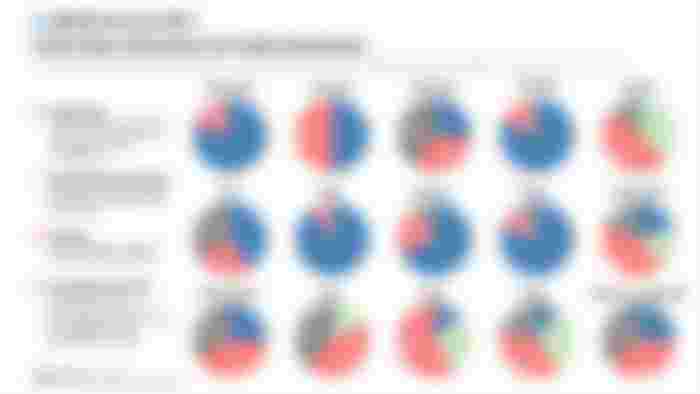
Solana is a Hot Blockchain for sure, with it having several DEFI and NFT platforms built on it. The Blockchain attracted a lot of users as it has fast transactions speeds, still this Blockchain is criticized by many to be centralised. Let’s evaluate Solana Blockchain’s level of decentralisation here.
Evaluating Solana Blockchain’s decentralisation based on these factors
Decentralisation is the degree to which a Blockchain is not centralised, i.e, controlled by few entities making the Blockchain vulnerable to be attacked by those few entities having control over the Blockchain.
There are certain factors that influence the level of a Blockchain’s decentralisation. These are - the number of core node developers that develop the basic framework of the Blockchain, the number of independent validators that validate the transactions in the Blockchain Network and the distribution pattern of the Blockchain’s native tokens.
All of these elements above, determine how much a Blockchain Network is Centralised, controlled by few entities and therefore are subject to getting compromised if those few entities choose to take control of the Network and act maliciously.
Determinant factors that make Solana a less decentralised Blockchain
Only a single entity develops core node infrastructure for the Solana Blockchain
Besides this, centralised Blockchains are subject to few main focal points of failure, similar to what happens when a centralised server is compromised with an entire ecosystem of apps in that Blockchain failing to function because the Blockchain’s core framework is centralised.
In the case of Solana, the core validator node is developed by a single entity, Solana Foundation who is the only core node developer for the Solana Blockchain, making Solana Blockchain have a central point of control and failure.

In contrast to Solana, Ethereum has several core node developers building the core In contrast to Solana, Ethereum has several core node developers building the core validator node for the Blockchain - Go Ethereum, OpenEthereum, Nevermind, and Besu.
Costly Hardware requirements pose a barrier for many to run the Solana validator nodes
Solana has 1,118 validators. The hardware requirements to become a validator for the Solana Blockchain is cost prohibitive, with validators requiring hardware employing the power of a 12 core CPU with 128GB of ram. This is because Solana Blockchain needs such powerful hardware for maintaining fast processing times of 65,000 transactions per second.
This high cost factor poses a barrier for most to become validators for the Solana Blockchain, making the Blockchain centralised with only a few entities with capital able to afford to invest in the hardware necessary to become a validator for the Solana Blockchain.
A framework which ensures that validators are indirectly chosen by Solana
The cost of running a Solana node is high, with a Solana validator spending 1.1 SOL every 24 hours for sending vote transactions. This venture would not be profitable for most because to break even itself 1$ million worth of Solana needs to be staked.
This is why Solana Foundation runs a subsidization program that supports validators who full fill certain criteria by awarding them with 25,000 SOL. This increases centralisation because validators in this way are indirectly chosen by the Solana Foundation, as they only sponsor validators that meet certain criterias set by them through the subsidization program.
Majority of the SOL tokens are held by a small group of insiders
SOL token distribution is another factor that needs to be taken into account when evaluating Solana Blockchain’s level of centralisation.
Here according to data from Messari, insiders who are Solana Labs’ team members and Venture capital firms own 48% of Sol tokens.

There are very few Sol tokens that are distributed and held by the public. A further 13% of SOL tokens is allocated to the Solana Foundation. This makes it clear that only a small group of insiders and venture capitalists hold the majority of the SOL tokens that are in supply.
Solana’s security and validation is powered by SOL staked by these small group of insiders
SOL tokens are used to secure the Solana network, and it is very likely that the 77% of the SOL that is staked to secure the network is delegated by these small group of insiders and venture capital firms.
This means that the Solana Blockchain is controlled and powered by this small group who own most of the SOL tokens that are in circulation and they are the majority SOL stakers that secure the Solana Blockchain. This makes Solana a very centralised Blockchain.
Projects in Solana’s ecosystem backed by few entities

Most of the projects built in the Solana Blockchain are supported by a small group of prominent crypto investors and funds such as the Alamada Research, making the entire Solana ecosystem centralised with few entities behind these projects.
There is potential for Solana Blockchain to get Decentralised
Solana has potential to get more decentralised but much of it depends on the intention of its founders.
There will be more and more SOL tokens coming into the hands of the public, with incentives and rewards distributing more SOL to the wider community. Therefore, centralisation will be reduced with the insiders’ share of SOL tokens getting diluted.
There would be more projects by independent teams getting built in Solana and becoming part of the Solana project ecosystem, which will make the Solana project ecosystem more decentralised.
Hardware prices would decrease as well, so more validators can afford to run Solana nodes in future.
For now, however, Solana Blockchain is very Centralised, but the Blockchain’s future may be different.



